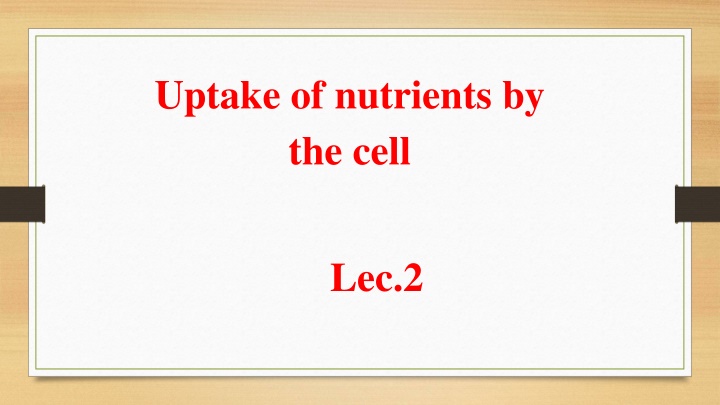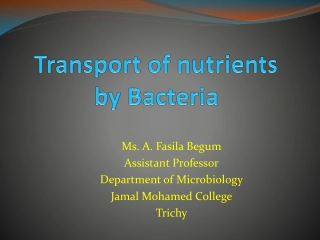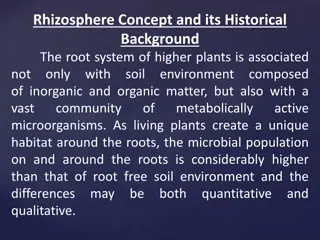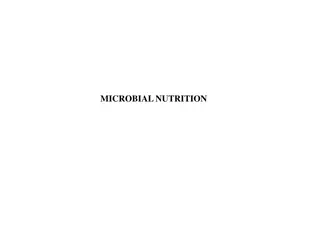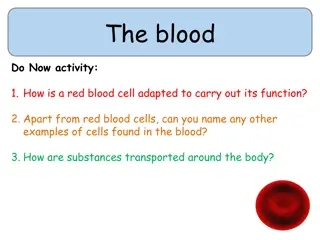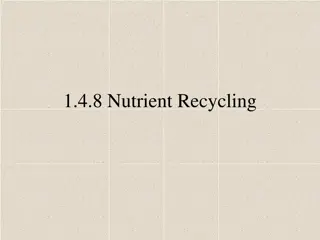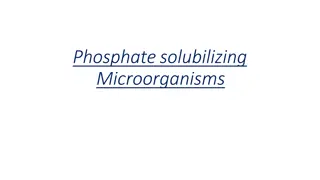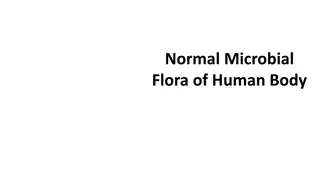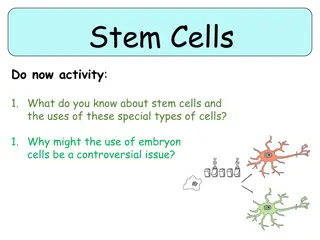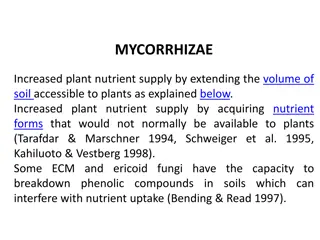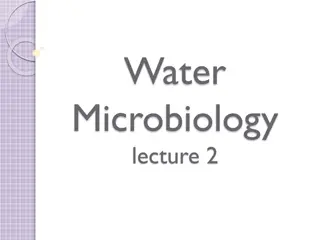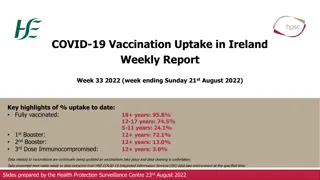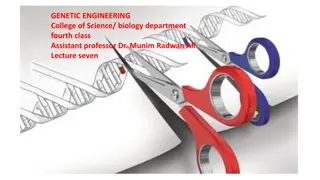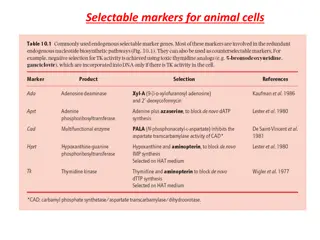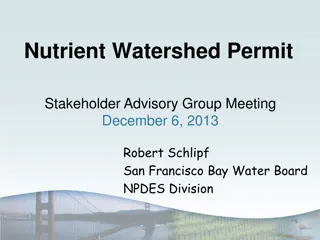Mechanisms of Nutrient Uptake by Microbial Cells
Nutrient uptake by microbial cells involves various transport mechanisms such as passive diffusion, facilitated diffusion, active transport, and group translocation. These mechanisms ensure the specific acquisition of required nutrients by the cell through the selectively permeable plasma membrane. While passive diffusion relies on concentration gradients, facilitated diffusion utilizes carrier proteins embedded in the membrane. In habitats with dilute nutrient sources, active transport and group translocation, both energy-dependent processes, play crucial roles in concentrating nutrients for microbial growth.
Download Presentation

Please find below an Image/Link to download the presentation.
The content on the website is provided AS IS for your information and personal use only. It may not be sold, licensed, or shared on other websites without obtaining consent from the author.If you encounter any issues during the download, it is possible that the publisher has removed the file from their server.
You are allowed to download the files provided on this website for personal or commercial use, subject to the condition that they are used lawfully. All files are the property of their respective owners.
The content on the website is provided AS IS for your information and personal use only. It may not be sold, licensed, or shared on other websites without obtaining consent from the author.
E N D
Presentation Transcript
Uptake of nutrients by the cell Lec.2
The first step in nutrient use is uptake of the required nutrients by the microbial cell, uptake mechanism must be specific-that is the necessary substances, and not others, must be acquired. Nutrients must pass through a selectively permeable plasma membrane that will not permit the free passage of most substances.
The most important transport mechanisms are: 1.Passive diffusion: the process in which molecules move from a region of higher concentration to one of lower concentration because of random thermal tension. The rate of passive diffusion is dependent on the size of the concentration gradient between a cell s exterior and it s interior, very small molecules (H2O,O2 & CO2) often move across membranes by passive diffusion.
Facilitated diffusion: the rate of diffusion across selectively permeable membranes is greatly increased by using carrier proteins, called permeases, which are embedded in the plasma membrane. Because carrier helps the diffusion process, it is called facilitated diffusion.
The rate of transport increases with the concentration gradient much more rapidly and at lower concentrations of the diffusing molecule than that of passive diffusion. The curve below resembles an enzyme substrate and is different from the linear response seen with passive diffusion .Carrier proteins also resemble enzymes in their specificity for the substance to be transported; each carrier is selective and will transport only closely related solutes.
M.O often live in habitats with very dilute nutrient sources, must be able to transport and concentrate these nutrients, thus facilitated diffusion mechanisms are not always adequate ,and other methods must be used ,the two most important transport mechanisms in such conditions are; active transport & group translocation , both energy-dependent processes.
Active transport; is the transport of solute molecules to higher concentrations, or against concentration gradient, with the use of metabolic energy. The carrier proteins or permeases bind particular solutes with great specificity, it is also characterized by the carrier saturation effect at high solute concentration.
Group translocation; many bacteria take up molecules by group translocation, a process in which a molecule is transported into the cell while being chemically altered. It is energy dependent transport because metabolic energy is used. In the 1,2,3 types the solute molecules move across a membrane without modification.
The best-known group translocation system is phosphoenolpyruvate; Sugar phosphotransferase system (PTS).It is transports a variety of sugars into cells while phosphorylating them using phosphoenolpyruvate (PEP) as the phosphate donor.
Figure -1 A model of facilitated diffusion the membrane can carrier change conformation after binding an external molecule and subsequently release
Figure -2 The kinetics of simple diffusion and facilitated diffusion
References References 1. Microbial Physiology. Albert G Moat, John W Foster, Michael P. Spector. 2002. Fourth Edition. A John Wiley and sons, INC., publication. 2. Microbiology. Lansing M Prescott, John P. Harley, Donald A. Klein.2004. Sixth Edition. Higher Education. 3. Microbial an introduction. 2004. Gerard J Tortora, Berdell R Funke, Christine L Case. Eighth Edition.
